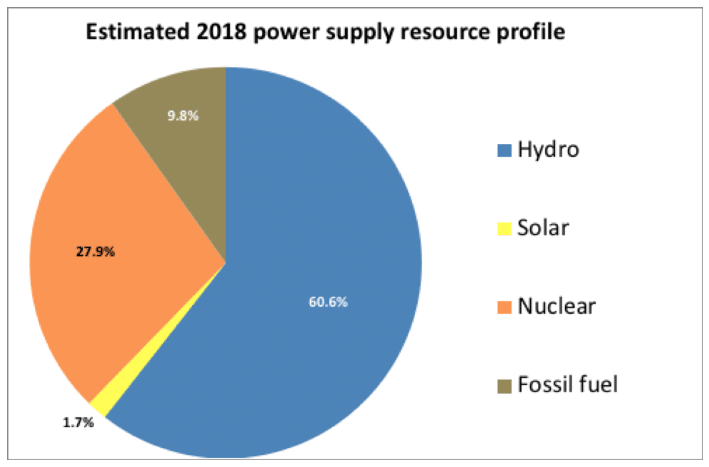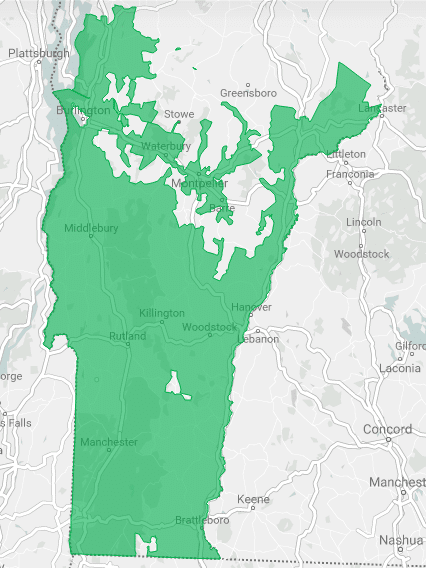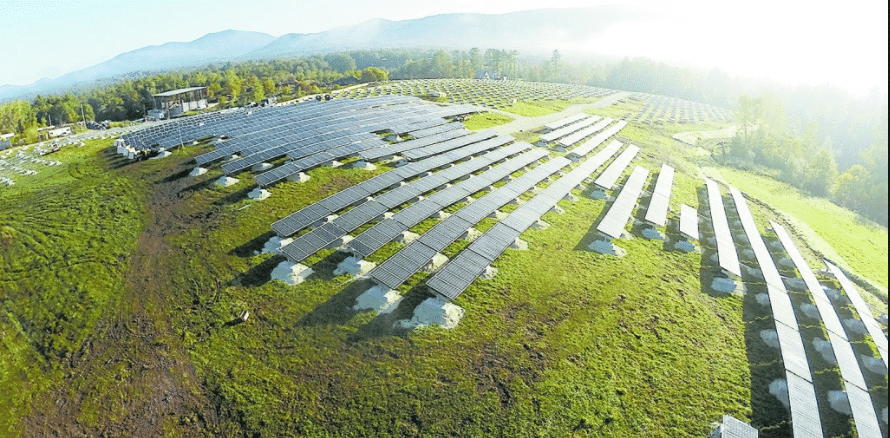The progress of the 100% renewable energy movement over the last few months has been truly staggering. After Sunrise Movement and first-term Congresswoman Alexandria Ocasio-Cortez (D) caught the attention of the world in December with their “Green New Deal” – which features a call for 100% renewable electricity by 2030 – legislation to mandate the full decarbonization of electricity was introduced in state houses across the nation.
This has already resulted in New Mexico and Puerto Rico setting 100% zero-carbon and/or renewable energy mandates. And even before this, Hawaii, California and Washington D.C. had set or were in the process of setting such mandates. Add in more than 100 cities – which were recently joined by Chicago – and you have a truly nationwide movement.
Nor has it been only states and cities which have made decarbonization commitments; Xcel has also announced that it would move to 100% zero-carbon power by 2050, the first such utility to do so (MidAmerican claims 100% renewable energy, but environmental groups note that it is still getting 30% of its power from coal).
But perhaps the most aggressive goal to be set yet happened this weekend in a small city near the Canadian border.
The greenest state?
While all of these cities and states get to claim a path to 100% clean electricity, not all the mandates are equally aggressive. While Hawaii, California, New Mexico and Puerto Rico have set 2045-2050 target dates for decarbonization (with interim targets all over the map), Washington D.C. and Chicago have mandates to reach 100% renewable energy by 2032 and 2035, respectively, which are much more ambitious.
But when listing the victories of the 100% renewable energy movement, one state is notably left out: Vermont. That’s because the Green Mountain State doesn’t have a 100% mandate; instead in 2015 it mandated that utilities reach 75% renewable energy by 2032 – which is actually more aggressive than the interim targets in most other states.*
On Saturday, Vermont utility Green Mountain Power (GMP) one-upped everyone – Xcel Energy, the state of California and even Washington D.C. and Vermont’s own mandate – by announcing a decarbonization target that is more ambitious than any of these: a 100% zero-carbon electricity by 2025, and 100% renewable energy by 2030.
Details of the plan are sparse. A press release puts an emphasis on local distributed generation and storage as well as purchases of wind and hydroelectric power, and GMP has further clarified that hydroelectric power, including that imported from Quebec, counts as renewable in its numbers.
This has been a matter of disagreement; while hydroelectric power fits the technical definition of a renewable energy resource, states including California do not include hydropower in their definition of “renewable” in state policies.
Either way, GMP does not appear to have as far to go as other utilities, and notes that its power supply is currently more than 60% renewable and 90% carbon-free, which includes significant purchases of nuclear power.

Graphic: Green Mountain Power
The reality is that much of this is coming and likely will come from outside the state. Vermont has no nuclear power plants, and while in 2018 in-state renewable energy generation was enough to meet roughly a third of Vermont’s demand, most of this was large hydroelectric power. In-state wind and solar were only enough to meet around 11% of demand.
 And this trend of importing much of its power may intensify as the state and GMP move towards these ambitious goals.
And this trend of importing much of its power may intensify as the state and GMP move towards these ambitious goals.
Regardless, this move is not negligible in terms of scale, as GMP has 265,000 customer accounts, covering the southern 3/4 of the state of Vermont. And as the state’s largest city, Burlington, is already served by 100% renewable energy, it will put the state in a position to blow through its RPS plans, and reach 100% renewable electricity ahead of any other state.
Batteries, transportation and heating
When it comes to battery storage, GMP walks the walk. The utility has built two large battery storage facilities, as well as installing more than 500 Tesla Powerwalls at the homes of its customers – which saved these customers substantial sums during last fall’s heat wave.
GMP says that it is building three more large battery storage facilities this year, but its vision does not stop there. The utility has electric vehicle (EV) charging facilities across its service area, and provides free level 2 chargers to its customers who buy EVs.
The utility says that it will be hosting a series of events to educate consumers about clean technologies in heating and transportation, noting that the “need for transformation” in these sectors as well.
“As a customer-obsessed energy company, we’ve delivered on our promise to help customers transition to a community-, home-, and business-based energy system that is greener and more resilient through energy storage options like home batteries, and options for charging electric vehicles,” stated CEO Mary Powell.
“Our partnerships with Efficiency Vermont and the Vermont renewable energy community have been, and will continue to be critical to making this happen for Vermonters. Our new vision is the next step.”
Correction: This article was changed at 11:45 AM on April 15. It earlier described Vermont’s renewable energy mandate as being more aggressive than that in any other state. However, as California’s mandate does not include hydropower and Vermont’s does, which is more aggressive is a matter of opinion. The article was further updated and wording changed to reflect clarifications that GMP has made to what it defines as renewables.
This content is protected by copyright and may not be reused. If you want to cooperate with us and would like to reuse some of our content, please contact: editors@pv-magazine.com.









By submitting this form you agree to pv magazine using your data for the purposes of publishing your comment.
Your personal data will only be disclosed or otherwise transmitted to third parties for the purposes of spam filtering or if this is necessary for technical maintenance of the website. Any other transfer to third parties will not take place unless this is justified on the basis of applicable data protection regulations or if pv magazine is legally obliged to do so.
You may revoke this consent at any time with effect for the future, in which case your personal data will be deleted immediately. Otherwise, your data will be deleted if pv magazine has processed your request or the purpose of data storage is fulfilled.
Further information on data privacy can be found in our Data Protection Policy.